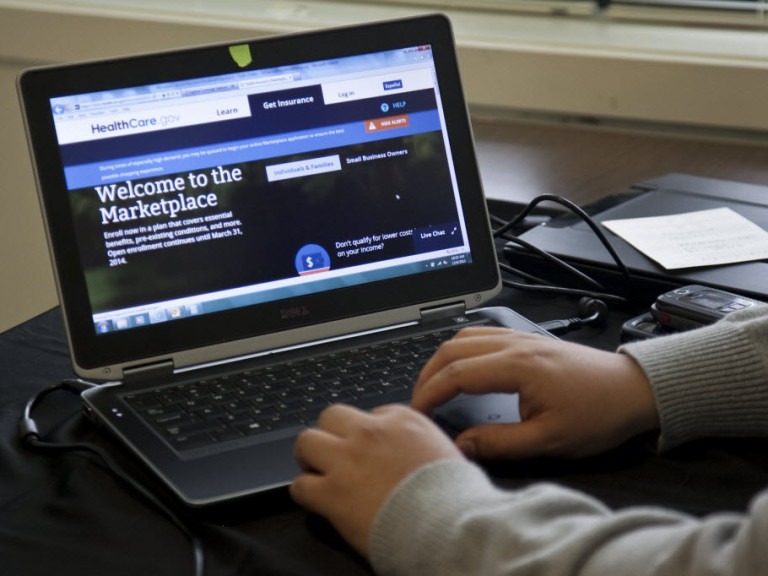Illinois consumers and small businesses using Obamacare will have fewer insurers to choose from and could face double-digit rate hikes for health plans they buy on the exchanges.

On average, the highest rate increase proposed for plans to be sold to Illinois small businesses is nearly 47 percent, and for consumers, 43 percent, according to the Centers for Medicare & Medicaid Services. Some proposed rate hikes are much more. Urbana-based Health Alliance, for example, wants to increase prices by 72 percent on a narrow-network HMO health plan for small businesses.
The proposed rates were revealed today by CMS, the federal agency that oversees HealthCare.gov, the online platform where consumers and small businesses buy health plans. CMS posted the insurers that want to return to the exchanges, which open for enrollment on Nov. 1, and any plans that carriers want to hike the prices of by at least 10 percent.
The announcement comes amid high anxiety surrounding the exchanges. President Trump has threatened to cut subsidies that help low-income people buy plans on the exchanges, which critics say could force insurers to hike premiums even more. At the same time, his administration has stopped funding outreach efforts in 18 cities, including Chicago, to help enroll people in plans sold on the exchanges and to usher the uninsured into the expanded Medicaid program in Illinois.
In Illinois, not only could plans get more expensive, but there will be fewer carriers to buy from. For consumers, national insurer Humana has bowed out of the online marketplace. The four insurers that submitted plans to sell are Blue Cross & Blue Shield of Illinois, Cigna, Health Alliance and Celtic Insurance. Each carrier was on the exchanges last year.
Only Health Alliance has pitched CMS to sell to small businesses. The other option was Chicago-based Blue Cross, the largest carrier in Illinois, which is leaving the so-called SHOP exchange for small businesses.
The upheaval clearly has insurers rattled.
“What’s different this year is the high level of uncertainty on the regulatory front,” Laura Mabry, a Health Alliance spokeswoman, said in the statement. “Health plans must plan for the possibility (of) the individual mandate and/or federal subsidies going away. Like many others, Health Alliance hopes lawmakers will continue to meet to bring certainty back to the market.”
She added that rate increases, and in some case decreases, are projected based on how much a person uses medical care.
In a statement, Blue Cross spokeswoman Erika Callahan said the company still plans to sell health plans to small businesses off the exchange. She added that rates are based on several factors, including escalating health care costs. They also reflect “uncertainty and the associated risks that exist within this marketplace.” That includes whether the federal government continues to fund subsidies and has policies that “encourage broad and continuous coverage.”
Nationwide, insurers have proposed double-digit rate hikes in other states, which is similar to what happened last year, said Cynthia Cox, who tracks federal health reform for the Kaiser Family Foundation, a Washington, D.C.-based non-profit.
Still, she said she thought insurers this year wouldn’t asked for such large price increases. On average, carriers are financially rebounding since losing lots of money on sick, expensive customers during the first few years of the exchanges (the marketplaces launched in 2013).
“You wouldn’t necessarily expect such high premium increases in that scenario,” Cox said.
She’s concerned people in the middle to upper middle class who buy plans on the exchanges, yet don’t receive a government subsidy to help pay for them, might skip out on insurance altogether if premiums rise too much.
Young people, who are typically healthier and don’t use much medical care, would likely be sheltered from price hikes because they get subsidies, Cox said.
Back in Illinois, here’s a deeper glimpse into some potential price hikes:
• Blue Cross wants to raise premium prices on four types of products by an average of 5 to 38 percent. The largest increase would be for BlueCare Direct, a health plan in partnership with Advocate Health Care, the largest hospital network in Illinois. The increases would impact nearly 310,000 people, Blue Cross told federal CMS.
• For Cigna’s sole product on the exchange, the carrier wants to raise prices on average 38 percent. (The range is 17 to 162 percent). Cigna filed these rates assuming that D.C. lawmakers would strip subsidies, according to CMS.
• Celtic proposed the smallest increase, around 15 percent.
While federal officials require insurers to publicly report if they want to hike premiums by 10 percent or more, CMS by law can’t say no. The Illinois Department of Insurance can’t refuse rate hikes either. But spokesman Michael Batkins noted that insurers are required to spend 80 percent of their premium revenue on medical services and improving the quality of them. Otherwise, carriers have to issue rebates.
“There is no question that major structural flaws in the (Affordable Care Act) have forced higher insurance rates and separated families from trusted physicians and hospitals,” Jennifer Hammer, director of the state insurance department, said in a statement.
But, she added that a majority of consumers in Illinois on the exchange would see a smaller average increase in costs than last year, and every county will be covered by an insurer.



If you like your plan you can keep your plan. If you like your doctor you can keep your doctor. Obama dama ding dong BS